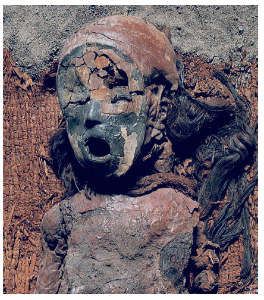Written by Ignacio Jara, Victoria University Wellington.
While the abrupt climate transitions of the glacial termination and the establishment of the present-day modes of climate variation during the Holocene seems to be well characterized in proxy records around the Southern Hemisphere, there is still sparse evidence about the impact of those changes on the migration, settlement and cultural development of ancient human populations.
A recent approach to this subject includes to compile the radiocarbon dates from archaeological sites as a proxy for human density. The underlying assumption is that period of increasing human presence should be reflected as a higher number of sites with dates falling within such the time interval. Whereas biases and limitations may be reduced by using larger radiocarbon data set, the main advantage of this method is that it provides a chronology of human population that can be directly compared with climate proxies. Two newly-published articles use this technique to uncover human responses to late Quaternary climate events.
The first of them combines a data set of more than 5,000 radiocarbon dates from all around the Australian continent with geospatial modelling (1). The main goal is to investigate the association between contractions and expansions of aboriginal population and climate instability during the terminal Pleistocene.
In Australia, cold intervals such as the Last Glacial Maximum (LGM; 23,000-18,000 years ago) have been associated with increased aridity and the expansion of grassland and non-vegetated landscapes (see blog number 3). What it is new from this study is that human population seems to have experienced a significant reduction during the LGM, as indicated by a decrease in the total number of radiocarbon dates of that age. Moreover, archaeological sites show what appears to be an interruption of elaborated cultural behaviour common prior to the LGM such as rock art, ritual burials and coloured ornamentation. These types of cultural expressions are only resumed in the early part of the Holocene Period.
The hyper arid Atacama Desert in northern Chile is also an interesting region to investigate relationship between precipitation and population changes since it is a natural passageway to southern South America, an area where the oldest evidence of human settlement in the continent.
The most intense pulses of occupation in Atacama seem to be coeval with late Quaternary rainfall events in the Central Andes. For instance, a well preserved archaeological site published this year shows continuous human occupation in the rainless part of the dessert during one of the last of these rainfall pulses between 12,700-9700 year ago (2). Under increasing moisture, the previously plantless landscape would have been scattered by small wetlands and woodlands, becoming oases for migrating populations and a bio-geographic corridor connecting the dessert with the more humid biomes of the south.
But perhaps more tantalizing is the cultural developments associated with increasing precipitation between 7,000-4,000 years ago in Atacama. Using a data set of more than 400 radiocarbon dates, a noteworthy scientific contribution published last year correlates increased rainfall with a notable increment in human density (3). The authors point out that more water availability and larger groups of people led to a period of rapid technological and cultural innovation which resulted in the emergence of the oldest examples of artificial mummification in the world (as early as 7,000 year ago).

Increasing water availability could have been one of
the environmental drivers behind the oldest known examples of artificial mummification in the Atacama Desert between 8,000 and 7,000 years ago. Photograph from Marquett et al. 2013.
Although arid environments can restrict human settlement and migration, they also provide extraordinary conditions for the conservation of archaeological sites which might be a great advantage for future studies that address climate-human relationship during the past. What makes the results meaningful is the possibility that natural conditions for human preservation became a distinctive and influential cultural trait upon early human groups. The preservation of the soul with the body after death is a common belief among traditional societies. So the lack of decomposition is not just a relevant issue for Quaternarists.
References
- A. N. Williams, S. Ulm, A. R. Cook, M. C. Langley, M. Collard, Journal of Archaeological Science 40, 4612 (2013).
- C. Latorre et al., Quaternary Science Reviews 77, 19 (2013).
- P. A. Marquet et al., Proceedings of the National Academy of Sciences 109, 14754 (September 11, 2012, 2012).